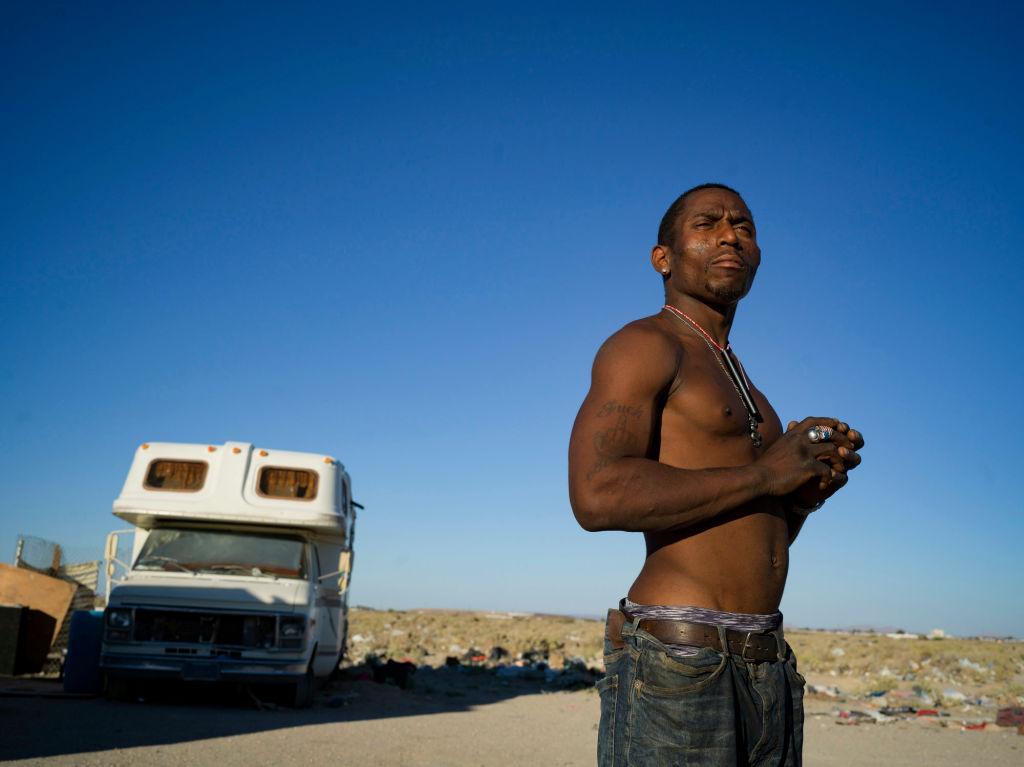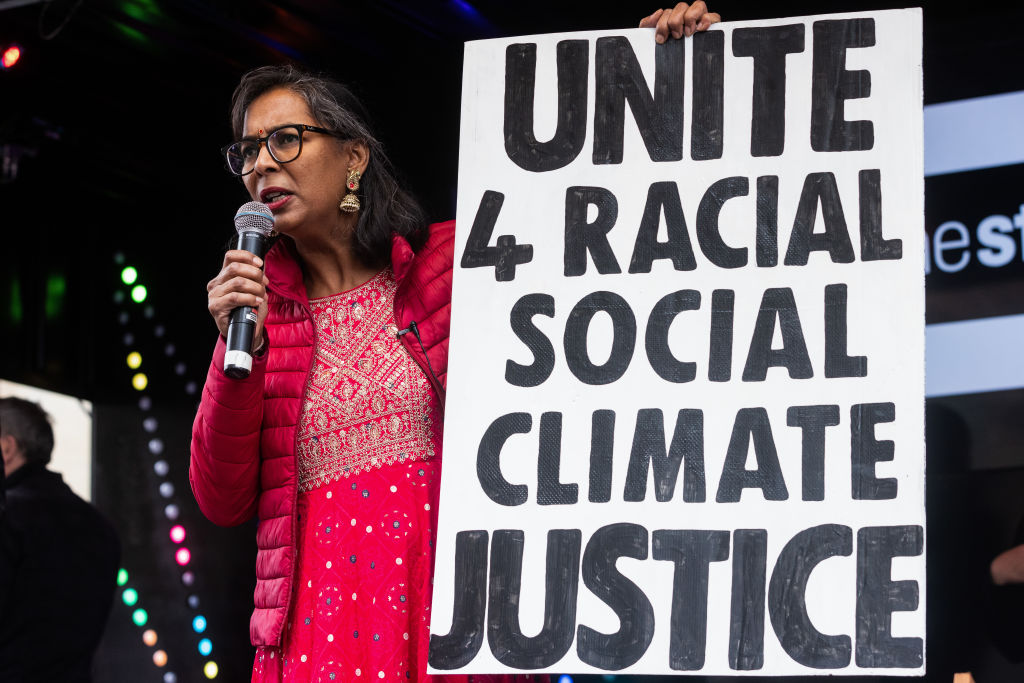
Source: Barbara Davidson / Getty
It might not seem like it, but climate change and racism are dangerously interlaced, which, in many cases, allows systematic racism to flourish without much pushback.
As the United States becomes more diverse, it’s important to understand how climate change disproportionately affects people of color due to the socioeconomic totem and it’s imperative to understand how we got here.
From COVID-19 to hurricanes to heatwaves and droughts to air quality, as climate change makes weather more severe, living under these conditions becomes extremely difficult.
Throughout history, social and economic policies have left Black people more exposed to the effects of climate change and environmental health hazards.
Racist policies centered around redlining and segregation have left Black neighborhoods hotter and more polluted than their white counterparts. America’s air quality and toxic waste dumping also add to the problem. Top that with natural disasters and you have a recipe for suffrage among Black people due to the impacts of climate change.
To understand this problem better we first must understand environmental racism.
What Is Environmental Racism?
Environmental racism is defined as environmental injustice that occurs within a racialized context both in practice and policy.
The concept describes the disproportionate impact of environmental hazards on people of color. Higher air pollution and rising temperatures have always plagued communities of color, but so have a host of other issues.
The term was coined by civil rights leader Benjamin Chavis in 1982. The environmental justice movement began during the Civil Rights Movement in the 1970s. But, environmental oppression dates back to America’s racist redlining practices in the 1930s.
The Great Depression led to historic housing practices which allowed banks and insurance companies to color-code residential maps of US cities, distinguishing neighborhoods largely based on race. Black neighborhoods were color-coded ‘red’ and deemed hazardous or low value. This also allowed banks to control where Black families lived in cities throughout the country by only allowing them mortgages in ‘redlined’ areas, many of which are still predominately Black.
A recent study found that neighborhoods formerly redlined back in the 1930s experience higher temperatures today as compared to the neighborhoods not redlined, in some places almost 13 degrees hotter.
The study also found that families living in these neighborhoods received reduced access to credit and limited real estate investment over time, leading to increased segregation and lower homeownership.

Source: Mark Kerrison / Getty
Redlining and Segregation
Redlining is a discriminatory lending practice that has been outlawed for centuries, but unfortunately, a few remnants of the prejudice protocol continue to haunt Black and Brown homeowners today.
NewsOne recently reported on a new analysis by the University of Pittsburgh School of Public Health which revealed long-term environmental and asthma-related inequities that disproportionately affect Black people in Pittsburgh are a result of discriminatory redlining practices of the 1930s. Black residents in Pittsburgh aren’t the only city dealing with the negative effects of redlining.
CNN reporter Derek Van Dam took a thermal imaging camera to two parks in Atlanta to measure their surface temperatures, one in a predominantly white neighborhood and the other in a historically Black section of the city–his findings were disturbing.
In the white park, Van Dam discovered surface temperatures to be around hovering around 80 degrees, but just six miles away in the Black park, which was historically redlined in the 1930s, temperatures reached 151 degrees.
Toxic Waste Dumping
The disposal of toxic waste isn’t devoid of racism either. According to the Nuclear Regulatory Commission, more than 15 million Black people lived in communities with one or more uncontrolled toxic waste sites. A 1987 report called Toxic Wastes and Race in the United States: A National Report on the Racial and Socio-Economic Characteristics of Communities with Hazardous Waste Sites, found that communities with higher percentages of minority populations were more likely to be chosen as sites for toxic waste facilities, with a disproportionate number of uncontrolled toxic waste sites being located in urban areas near black and Hispanic neighborhoods.
How Can Environmental Racism Be Solved?
As severe heat waves, floods and hurricanes worsen, so will the importance of understanding environmental racism.
The more we know, the more we can demand the resources we need to solve problems and save lives. Although the plight of environmental racism is daunting, there is hope.
Grassroots organizations that promote environmental justice look to educate communities on the dangers of environmental racism, but it won’t be enough without your help. Pay close attention to your local Government and policies.
Don’t be afraid to put pressure on your elected officials if you oppose practices or policies that could be harmful to your community.
SEE ALSO:
What Is Redlining And How Can It Be Solved?
40 Acres And A Mule: What Are Reparations And Why Is The Concept So Polarizing?
The post Environmental Racism: How Racist Policies Around Climate Affect Black People appeared first on NewsOne.
Environmental Racism: How Racist Policies Around Climate Affect Black People was originally published on newsone.com












